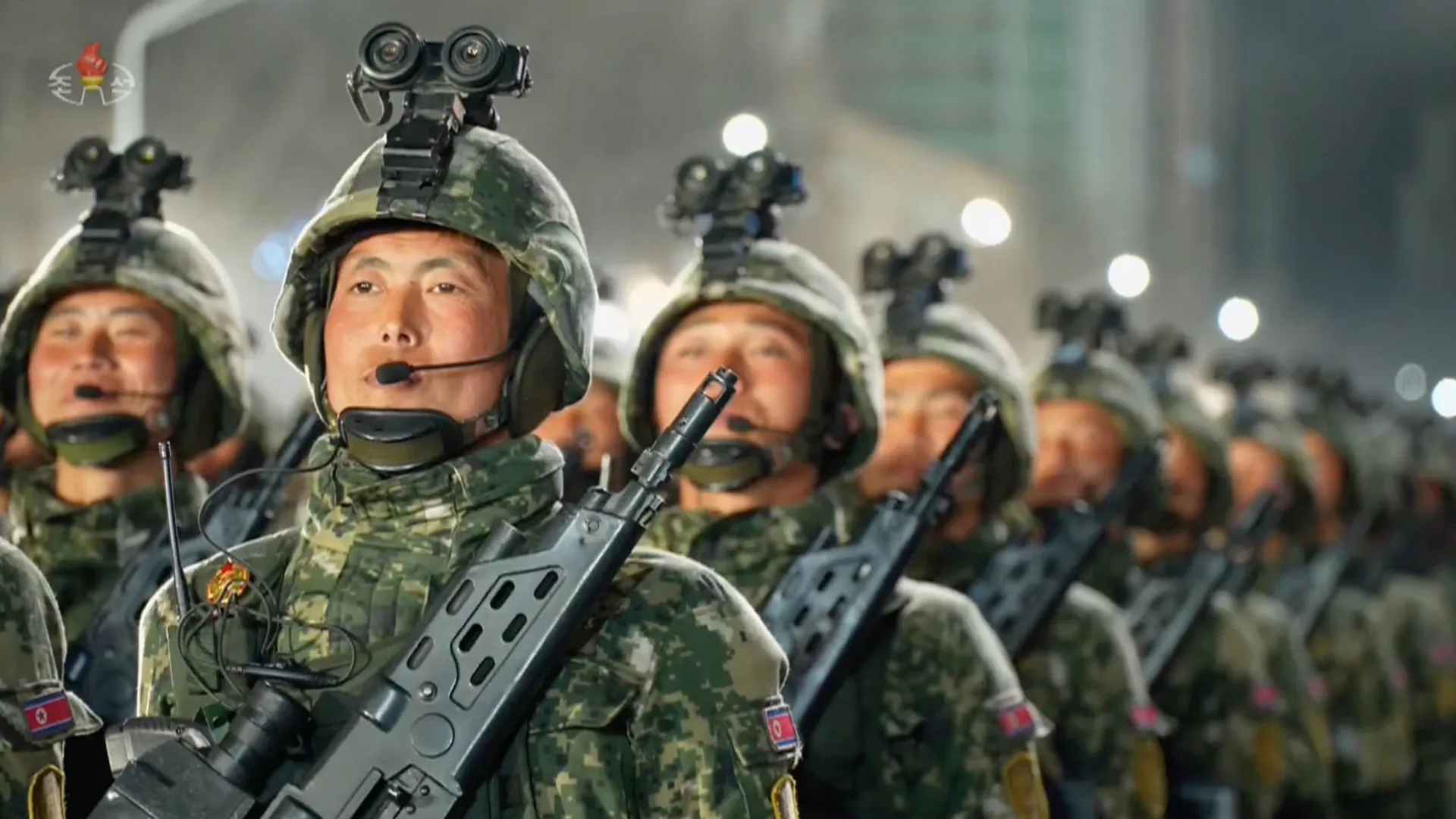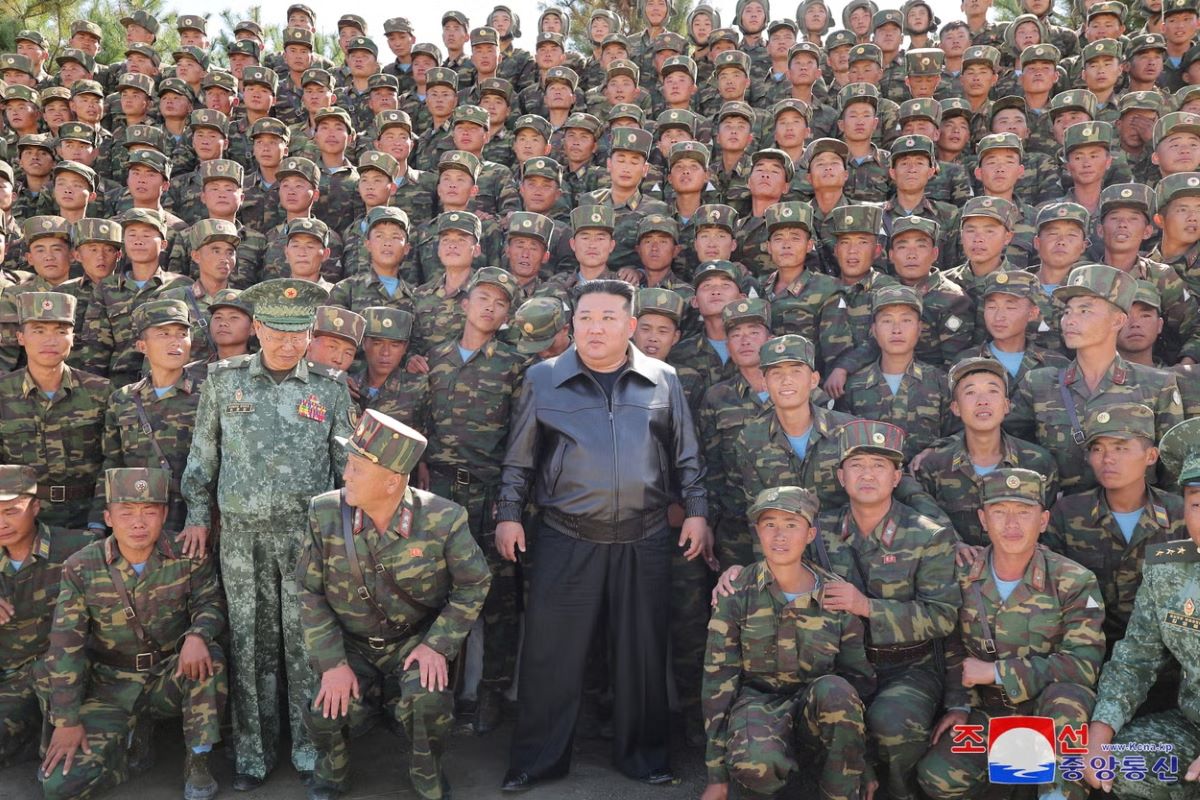South Korea’s intelligence agency reported on Friday that at least 1,500 North Korean Special Forces troops are undergoing training in far eastern Russia, with satellite images tracking their movements.
Ukrainian officials have accused North Korea of preparing to send up to 10,000 troops to support Russia in its war against Ukraine, a move that could significantly escalate tensions between Pyongyang and the West.
The Pentagon, however, stated on Thursday that it could not confirm reports about potential North Korean forces heading to Russia or Ukraine.
NATO Secretary General Mark Rutte, when asked about the South Korean report, said the alliance would consult with Seoul to gather all the evidence but added that NATO could not yet verify if North Korean soldiers were actively involved in the conflict.
South Korea’s National Intelligence Service (NIS) said it first tracked a senior North Korean missile development official visiting Russian front lines in August alongside other North Korean officers. They were reportedly providing “on-site guidance” to Russian forces using North Korean weapons.
From October 8 to 13, the NIS tracked around 1,500 North Korean Special Forces troops moving to eastern Russia. The agency said North Korean leader Kim Jong Un, who has pledged support for Russia’s war in Ukraine, personally inspected the troops twice before their deployment.
According to Seoul, the troops were equipped with Russian uniforms, weapons, and IDs and integrated into Siberian units to disguise their identity as North Koreans.
Additionally, South Korea reported that Pyongyang had supplied Russia with approximately 13,000 containers of weapons in 70 shipments since August 2023, including missiles, antitank rockets, and up to 8 million artillery shells of 122mm and 152mm caliber.
On Friday, South Korea’s National Intelligence Service released a satellite image from Airbus Defense and Space showing Russia’s Ussuriysk military facility, where North Korean personnel were reportedly gathered earlier in the week.
“The direct military cooperation between Russia and North Korea, as reported by foreign media, has now been officially confirmed,” the NIS said.
While the NIS does not always have a consistent track record in assessing North Korea’s leadership and intentions, NATO officials have corroborated several arms shipments from North Korea to Russia.
A senior NATO official confirmed on Thursday that at least 11,000 containers had been sent from North Korea to Russia since August 2023, containing some 2 million rounds of artillery.
The official, speaking on the condition of anonymity, noted that it was “certainly very plausible” that North Korean observers were present in Russia, possibly to assess the performance of their weapons or provide technical assistance, though there was no confirmation of large numbers of North Korean troops preparing for deployment.

North Korean Troops (Photo: Twitter)
“We have not seen that movement, but the trend of North Korean support is increasing,” the official said, adding that NATO remains concerned about the growing relationship between Russia and North Korea.
The South Korean report comes at a critical time for Ukraine, as President Volodymyr Zelensky pushes his “victory plan” to end the war.
Zelensky has been traveling to the U.S. and Europe, seeking support from allies, permission to use Western weapons inside Russia, and fast-tracked NATO membership for Ukraine, which would provide vital security guarantees.
Earlier this year, Russian President Vladimir Putin and Kim Jong Un signed a mutual defense pact, agreeing to expand military cooperation.
North Korean involvement in foreign wars is rare. If North Korean troops are deployed in the Russian conflict, it would be their first major combat mission outside their country.
According to Fyodor Tertitskiy, an expert on North Korea’s military at Seoul’s Kookmin University, North Korea’s typical approach is to keep its soldiers within the country for strict control and indoctrination.
Pyongyang is believed to have supplied old Soviet-era munitions to Russia, which are in short supply, according to officials from the U.S., Ukraine, and South Korea.
U.S. officials believe these shipments include artillery shells and other weapons, with North Korea possibly receiving Russian assistance in advancing its own weapons program in return.
North Korea has maintained a stockpile of Soviet-era weapons since the ceasefire in the Korean War (1950-1953) and continues to train its military, though its troops lack actual combat experience.
On Friday, South Korean President Yoon Suk Yeol held an emergency meeting with top national security, defense, and intelligence officials to discuss the deployment of North Korean troops to Russia and to outline potential “future response measures,” according to the presidential office.
The Washington Post recently reported on an assessment from Ukrainian intelligence that “several thousand” North Korean soldiers are currently training in Russia and could be deployed to the Ukrainian front lines by the end of the year.
Zelensky, speaking in Brussels on Thursday, told reporters that Ukrainian intelligence had determined that some North Korean officers were already in Ukraine and that around 10,000 more troops were being prepared to fight.
Ukrainian spy chief Kyrylo Budanov told the military news website The War Zone that 2,600 of these North Korean troops would be sent to Russia’s Kursk region, where Ukraine launched a surprise counterattack in August, now controlling part of Russian territory.
Zelensky’s victory plan has received mixed reactions from Ukraine’s allies. Despite his recent meetings in the U.S. with President Joe Biden, Kamala Harris, and Donald Trump, no significant policy changes have been announced, particularly regarding Ukraine’s request for long-range strikes, which it deems crucial for success on the battlefield.











































